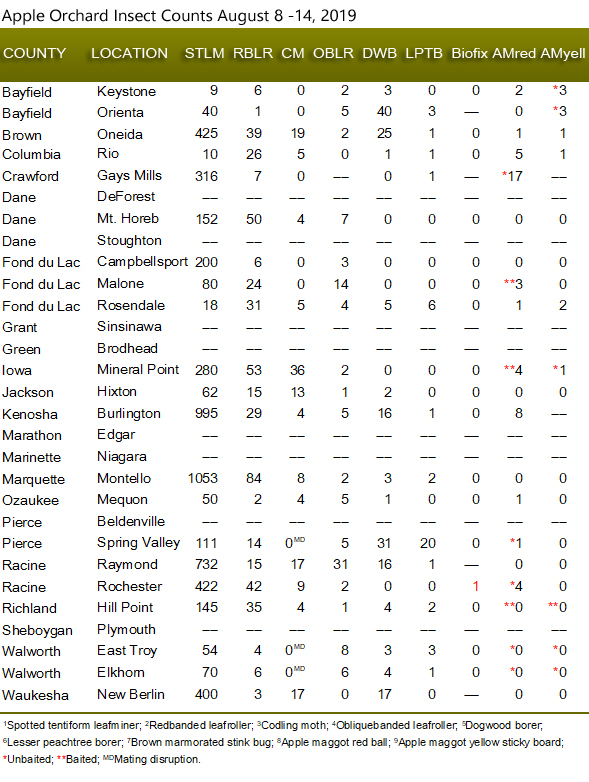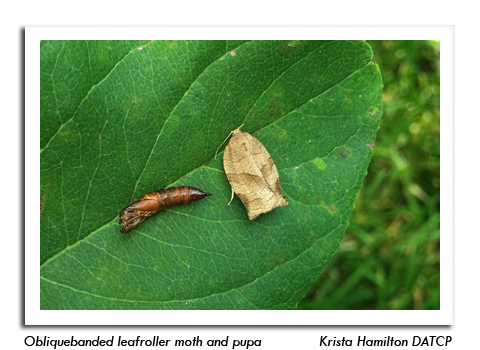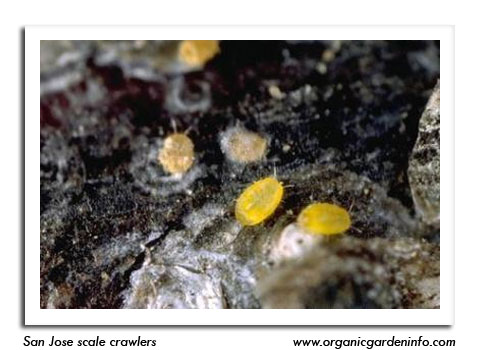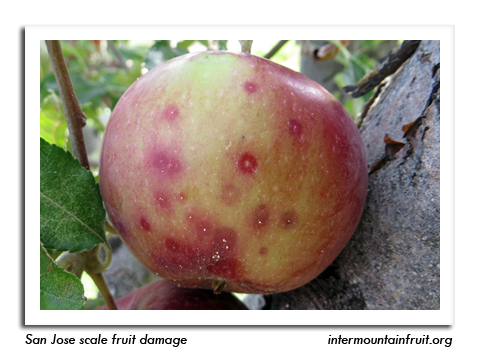
 |
|
|
Fruits
Volume 64 Number 16 Date 08/15/2019 CODLING MOTH - Significant moth flights continued in several eastern and southern Wisconsin locations. Above-threshold counts exceeding 5 moths per trap were registered in 9 of 21 cooperating orchards during the period ending August 14. Additional spot treatments may be necessary for orchard blocks where this pest remains abundant. Control of second-generation CM is important since the larvae can continue to emerge and damage fruits even after the apples are in storage. APPLE MAGGOT - Most monitoring sites captured fewer AM flies than in the previous week. The high count was again noted at Gays Mills in Crawford County where 17 flies were trapped on an unbaited red sphere. Apple maggot controls may need to be maintained through the first week of September if flies are being captured at the rate of one fly per trap per week on unbaited traps or five flies per trap per week on baited traps. OBLIQUEBANDED LEAFROLLER - Oviposition by the summer flight of moths is underway. In contrast to spring caterpillars that primarily feed on vegetative tissue, late-season larvae are more damaging, as they infest ripening fruit. Effective management of the summer generation in August will reduce the overwintering population and next year's spring brood. Orchard IPM Specialist John Aue recommends a 3-5% fruit injury rate as the treatment threshold and suggests a trapping density of two traps per 20 acres to determine where to direct treatments. SAN JOSE SCALE - Monitoring for second-generation crawlers is suggested through late August. Damage by this pest can increase exponentially from one generation to the next, and problems may persist through mid-September. As harvest begins, it is recommended that growers examine fruits for the "black cap stage" adults and maintain tape on infested limbs. A count of 10-15 scale crawlers over a few days or 10 crawlers on one tape, may warrant application. STINK BUG - Late-season activity is increasing. Apple growers should continue to scout fruits for the dimples or dark, irregular circular depressions typical of stink bug feeding, and flag sites with multiple depressions on the same fruit or tree. Spot treatment is usually adequate if damage is light or limited to specific orchard areas of blocks. -- Krista Hamilton, DATCP Entomologist 




.jpg)
|
|
|